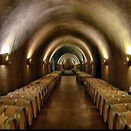Wine Caves in Napa and Sonoma
What Exactly Is a Wine Cave?
Imagine stepping into a cool, quiet tunnel carved beneath a hillside, where the air smells faintly of oak barrels and aged vintages. That’s a wine cave, a purpose-built underground haven designed to age, store, and sometimes taste wine in the most ideal conditions.
These caves come in a few different forms:
- Naturally occurring (though pretty rare)
- Hand-dug historical gems think 19th-century craftsmanship
- Modern, engineered tunnels tucked into mountain sides or rolling vineyards
Places like Napa and Sonoma are perfect for them thanks to their geology, which offers the cool, stable underground environments wine loves.
Why Wine Caves Are So Beloved by Winemakers (and Visitors)
1. Always the Perfect Chill
Temperatures usually hover between 55–60°F (13–16°C), a sweet spot that lets wine age gracefully, not too fast, not too slow.
2. Humidity Just Right
Moist air (around 60–80% humidity ) keeps corks moist and the wine sealed tight, preserving all those delicate flavors.
3. Naturally Dark
No sunlight = no UV damage. The cave keeps your wine protected from flavor-fading rays.
4. Still as Stone
Vibration can disturb aging wine. Underground caves offer a peaceful, undisturbed home where wine can rest and develop.
5. Naturally Eco-Friendly
Thanks to the Earth’s insulation, these caves stay cool without cranking the A/C, lowering energy use and keeping things sustainable.
6. Tasting Room Goals
Let’s be honest, there’s something magical about sipping wine inside a softly lit cave. It’s intimate, atmospheric, and unforgettable.
Wine Cave History and Its Beginnings 🍇
Wine caves aren't just a modern luxury; they’ve been around for almost 7,000 years! From ancient Iran to the Roman Empire, early wine lovers quickly realized that underground spaces were perfect for keeping their wines cool, dark, and delicious.
Champagne’s Secret Cellars
In the heart of France’s Champagne region, the Romans carved deep chalk caves called crayères that later became the aging grounds for iconic houses like Pommery and Ruinart. These caves even protected people during WWI, doubling as makeshift shelters.
California’s Golden Age (and Comeback)
In Napa and Sonoma, the first wine caves were dug by hand in the 1800s, often by Chinese laborers skilled in tunnel construction. But the wine cave craze fizzled until the 1970s, when winemakers brought them back in style, with a modern twist.
Caves of Today
Today’s wine caves are nothing short of magical. Think candlelit tastings, soaring vaulted ceilings, and even art installations. They’re as much about the experience as the storage, where craftsmanship meets atmosphere.











